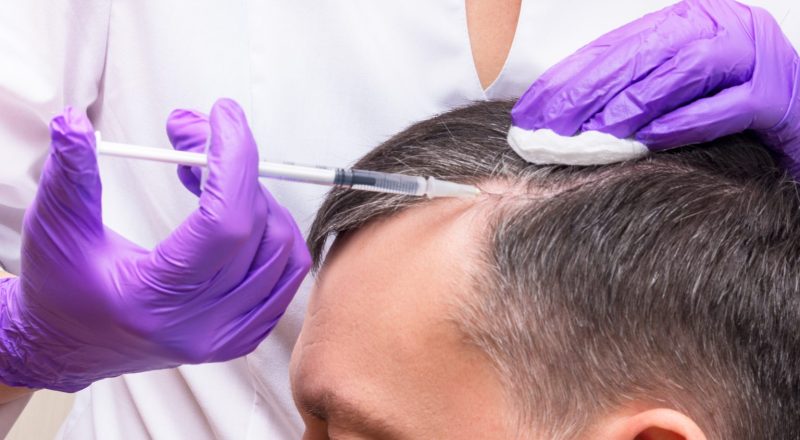Introduction
Hair loss is a common but a bit challenging concern for many people around the world. While there are numerous treatments available, Platelet-Rich Plasma or PRP therapy has gained popularity in recent years as a non-surgical, minimally invasive option for promoting hair growth. However, not all PRP treatments are the same. Let’s know more about the different types of PRP for hair, their effectiveness, and what to consider when choosing the right treatment for your hair loss.
Understanding PRP Therapy
Platelet-Rich Plasma or PRP therapy is a medical treatment that utilizes the patient’s own blood to stimulate hair growth. It involves drawing a small amount of the patient’s blood, processing it to separate the platelet-rich plasma, and then injecting this concentrated plasma into the scalp. The growth factors in PRP help rejuvenate hair follicles and encourage the growth of new, healthier hair.
Different Types of PRP for Hair

- P-PRP, or pure platelet-rich plasma
Eight concentrations can be achieved with a pure PRP system. By optimising the double spin technique with clinical technology, it meets the standards needed to surpass the clinical demand for deliverable platelets.
- Leukocyte Platelet-rich plasma (L-PRP)
Open traumatic injuries are frequently treated with L-PRP. When LP-PRP was applied to human fibroblasts, their proliferation was significantly higher than that of untreated controls.
- Conventional PRP, or platelet-rich plasma
Platelets, which are broken down blood cells, are what PRP uses to stimulate the synthesis of collagen and elastin. Five to seven times the normal quantity of platelet concentration is seen in the platelet yield for PRP products. Particular applications for this kind of therapy are in the domains of dermatology, sports medicine, and cosmetics.
The factors effecting the PRP effeciency
The effectiveness of PRP therapy for hair growth can vary for different indviduals due to several factors:
- PRP tends to be more effective for individuals with early-stage hair loss or thinning. Those with significant balding may see limited improvement.
- Younger patients typically respond better to PRP treatments than older individuals.
- PRP is generally more effective for hair loss caused by factors like androgenetic alopecia (genetic hair loss) or certain medical conditions.
- A consistent treatment schedule with the recommended number of sessions is vital for noticeable results.
Choosing the Right PRP Treatment
Selecting the right PRP treatment for your hair loss needs careful consideration. Here are some steps to help you make an informed choice:
- Seek a consultation with a qualified and experienced hair restoration specialist.
- Research the clinic’s reputation and read patient reviews. Make sure the clinic has a track record of delivering safe and effective PRP treatments.
- Discuss the different types of PRP treatments available, their costs, and expected outcomes with your specialist.
- PRP treatments can vary in cost, so consider your budget and choose a treatment that aligns with your financial situation.
- Have realistic expectations about the results. PRP can improve hair density and thickness, but it may not provide a complete solution for severe balding.
Conclusion
Platelet-Rich Plasma therapy offers hope for individuals seeking to address hair loss without resorting to surgery or medications. However, it’s essential to understand the different types of PRP for hair and their varying effectiveness. Consult with a reputable specialist, consider your individual circumstances, and make an informed decision to find the best PRP treatment for your hair restoration journey. Remember that results may take time, so be patient and consistent.
